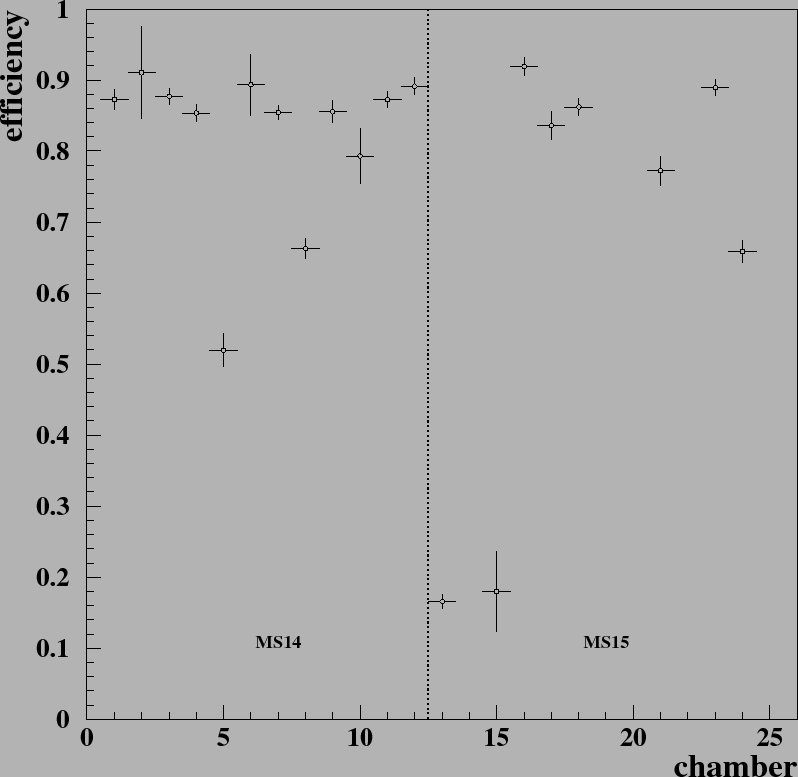Next: Test of the Algorithm Up: Hit efficiency Previous: Efficiency of the PC Contents
In the current setup the number of possible measurements, for the pattern recognition in TC superlayers, is limited by three measurements per superlayer, this caused the decision not to extend the pattern recognition program to perform standalone reconstruction in the TC chambers. To measure the efficiency in TC, tracks reconstructed in the PC region of the tracker are used. This leads to the effect that the efficiency estimation depends on the quality of the reconstruction in the PC region of the ITR because mainly tracks reconstructed in this region are in the acceptance of the TC chambers. In order to avoid ghost and badly reconstructed tracks confirming hits in TC chambers are required.
The search window, is defined with the help of the extrapolated
covariance matrix with additional corrections to compensate the remaining
misalignment. The misalignment can be expected because alignment
of the TC chambers is based on the tracks reconstructed in the PC region and
extrapolated over a rather large distance (
![]() ).
For this refining some additional fitting procedure is needed.
In the first iteration, the mean position
).
For this refining some additional fitting procedure is needed.
In the first iteration, the mean position ![]() of the residual peak is calculated and only hits which fulfilled the following
requirement
of the residual peak is calculated and only hits which fulfilled the following
requirement
In each run a sample of 50.000 events corresponding to the period of stable operation (background and interaction rate) is used.
 |
The obtained numbers are shown in Fig. 5.13. The left part of the plot corresponds to the chambers in station MS14 and the right to the chambers in MS15. The efficiency of MS14 is about 90% and significantly better compared with MS15. Four chambers of MS15 were switched off at that time period and two others showed efficiencies below 20%. The variation of efficiencies for the proper working chambers are about 5%. The main contribution to the inefficiency comes from hardware problems mentioned above and not perfect masking for some chambers5.5 MS15 is equipped with several chambers which failed to fulfill the requirements of the pre-installation tests, due to a lack of good chambers these bad chambers had to be used.
The chambers of TC superlayers were foreseen to be used for purposes of SLT and FLT triggers. To achieve a performance necessary for these purposes further GEM voltage adjustments and the replacement of not working chambers would be needed.
Yury Gorbunov 2010-10-21